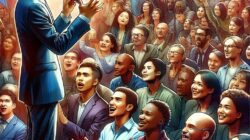Trudeau Acknowledges Need for Immigration Reform
In a candid reflection on Canada’s immigration policies, Prime Minister Justin Trudeau admitted that the federal government “could have acted quicker” in managing the significant influx of migrants into the country since the onset of the COVID-19 pandemic. Trudeau’s acknowledgment underscores the challenges that have emerged in the wake of a shifting immigration landscape marked by a surge in labor demands and a variety of stakeholder influences.
The Shift in Immigration Policy Post-Pandemic
Trudeau’s remarks were delivered in a nearly seven-minute video message released over the weekend. In this communication, he outlined crucial changes being made to Canada’s approach to immigration, particularly regarding its temporary foreign worker program and permanent residency admissions. He confirmed that Canada is poised to reduce the threshold for permanent residents allowed into the country by as much as 27% by the year 2027.
The Prime Minister attributed much of the responsibility for the immigration surge to “bad actors,” meaning entities like corporations and universities, which he accused of misleading potential immigrants. These organizations are said to have lured individuals into coming to Canada under false pretenses, promising opportunities ranging from educational qualifications to permanent residency and employment.
Federal Responsibility and Accountability
The Prime Minister took a reflective stance, suggesting that the federal government shares a portion of the accountability for not mitigating the immigration influx earlier. “Looking back, when the post-pandemic boom cooled and businesses no longer needed the additional labor help, as a federal team, we could have acted quicker, and turned off the taps faster,” Trudeau stated, emphasizing that immigration reform is fundamentally a federal responsibility.
According to Trudeau, the government has the necessary mechanisms to adjust immigration levels and intends to exercise those powers to better align with current labor market conditions.
Details of the New Immigration Plan
Canada’s new immigration plan formally introduced last month seeks to curtail the number of immigrants pursuing permanent residency over the next three years. Under the revised thresholds, the number of immigrants allowed in 2025 will decrease from 500,000 to 395,000. Following that, the target for 2026 is set at 380,000, with the final cap for 2027 placed at 365,000.
In a historic move, Canada will also begin to impose limits on the number of temporary foreign workers, aiming to ensure that they comprise no more than 5% of the nation’s overall population.
Political Context and Public Response
The backdrop to Trudeau’s announcement includes dwindling support for his liberal government amid rising immigration-related dissatisfaction among voters. Reports indicate that Canada has begun imposing stricter visa requirements and has significantly increased the number of rejected immigrant applications—up by approximately 20% per month during the first seven months of this year, according to Reuters.
Criticism from Political Rivals
The Conservative Party, led by Pierre Poilievre, has sought to capitalize on the situation by criticizing Trudeau’s government for the current chaos within Canada’s immigration system. In a recent podcast, Poilievre highlighted that the significant increase in Canada’s population—estimated at 300% over several years—has occurred under Trudeau’s administration. He placed blame on the Prime Minister for the alleged waste, fraud, and abuse associated with immigration policies that contributed to the surge in post-pandemic immigration.
“Now, [Trudeau] is basically denouncing his entire immigration policy and expecting us to believe that he can fix the problems that he caused,” Poilievre asserted. He underscored the need for immigration reforms that would restore Canada’s standing as having the best immigration system in the world.
Conclusion
As Canada navigates the complexities of immigration policy amid changing labor needs and public sentiment, Trudeau’s recent statements illustrate a government grappling with the consequences of its own policies. By setting forth ambitious new restrictions on immigration, the Prime Minister aims not only to address immediate challenges but also to recalibrate the relationship between Canada’s labor market and its immigration system. How these changes will unfold in practice and their reception by the public remain to be seen, but the conversation surrounding immigration in Canada is poised to escalate as the nation’s political landscape evolves.












